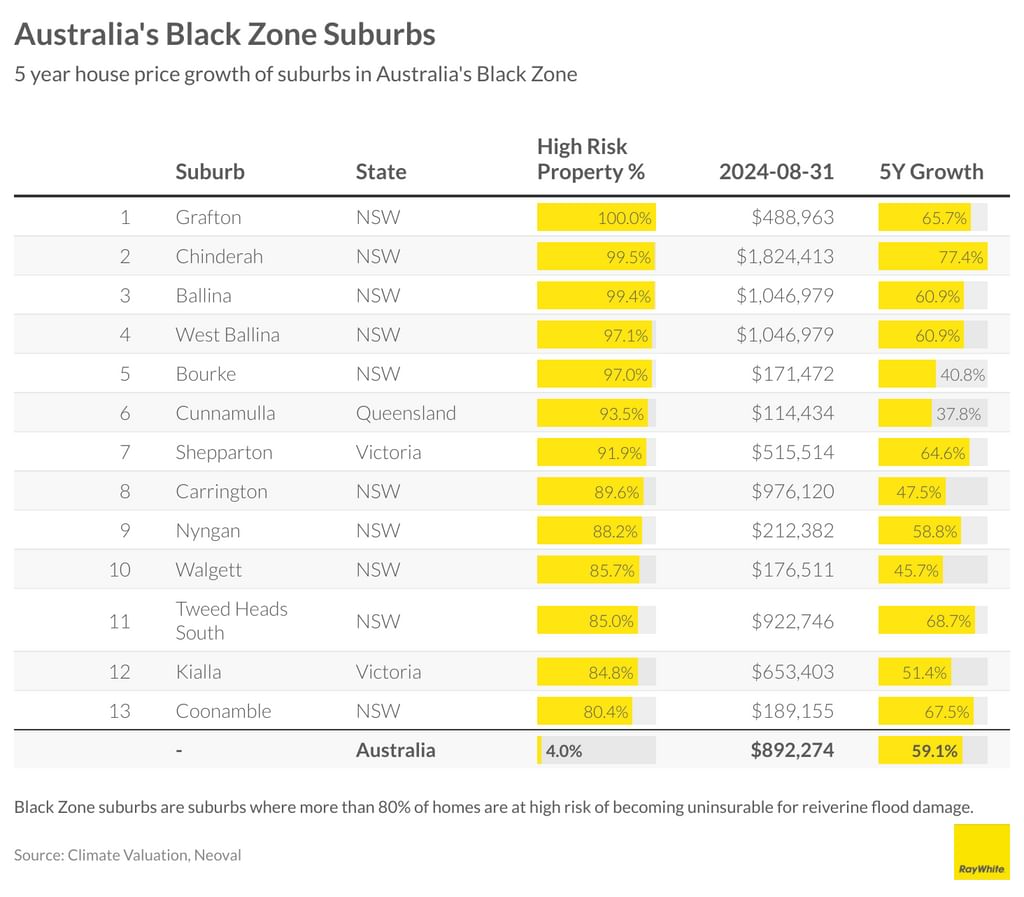

A recent report highlights a growing concern among environmental and real estate experts: Are homebuyers overlooking the increasing risks posed by climate change in their pursuit of picturesque properties?
Australians have long been drawn to homes with stunning views and access to nature, whether that be beachfront properties, riverside homes, or rural bush retreats. However, these scenic locales are often the most vulnerable to climate-related events such as rising sea levels, increased flooding, and wildfires.
Nerida Conisbee (pictured), chief economist at Ray White, weighed in on the issue. “Beaches face rising seas, rivers may flood more often, and bush areas are at risk of wildfires,” she said. Yet, she highlighted that home prices in these high-risk areas continue to climb, leaving experts wondering if homebuyers are properly accounting for the dangers—or if the allure of a desirable lifestyle is clouding judgment.
In June 2024, Climate Valuation, a firm that offers climate risk analysis to property owners, released a report examining the flood risks in Australian suburbs and towns. The report found that 4% of all homes across Australia are considered high-risk, meaning they face significant potential for flooding and could become uninsurable or subject to skyrocketing insurance premiums.
Queensland ranked highest in terms of flood-prone properties, with 5.1% of homes falling into the high-risk category, while the Australian Capital Territory (ACT) had the lowest at 1.6%.
The report also investigated the potential impact of flood risk on property values, looking specifically at whether high-risk areas underperformed or overperformed compared to the broader housing market. Surprisingly, the study found that flood risk had a limited impact on home prices.
In fact, all 13 of the so-called “Black Zone” suburbs, where over 80% of homes are considered high-risk, saw price growth in the past five years. More than half of these areas, including Grafton, Chinderah, and Ballina, even outperformed the national average in terms of price appreciation.

At a state level, the trend remained consistent, with most high-risk suburbs experiencing solid price growth, Conisbee noted. However, Queensland saw a slight exception, as price growth in some high-risk suburbs fell below the state average. This could be due to the remote nature of towns like Cunnamulla and Charleville, or perhaps a reaction to a series of severe flooding events in the region.
Conisbee said that the report has indicated that climate risks, particularly flood dangers, have had minimal effect on property demand in high-risk areas. Even though the study focused solely on flood risks, Conisbee suggested that similar trends might be observed for other climate-related hazards, such as bushfires.
Do you have something to say about this story? Let us know in the comments below.
